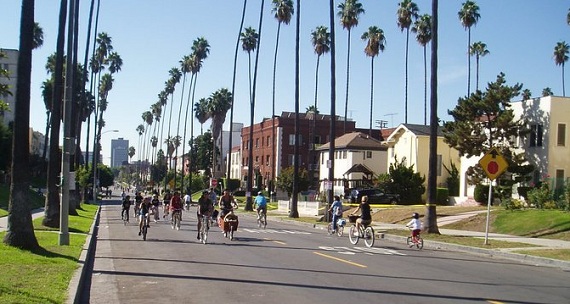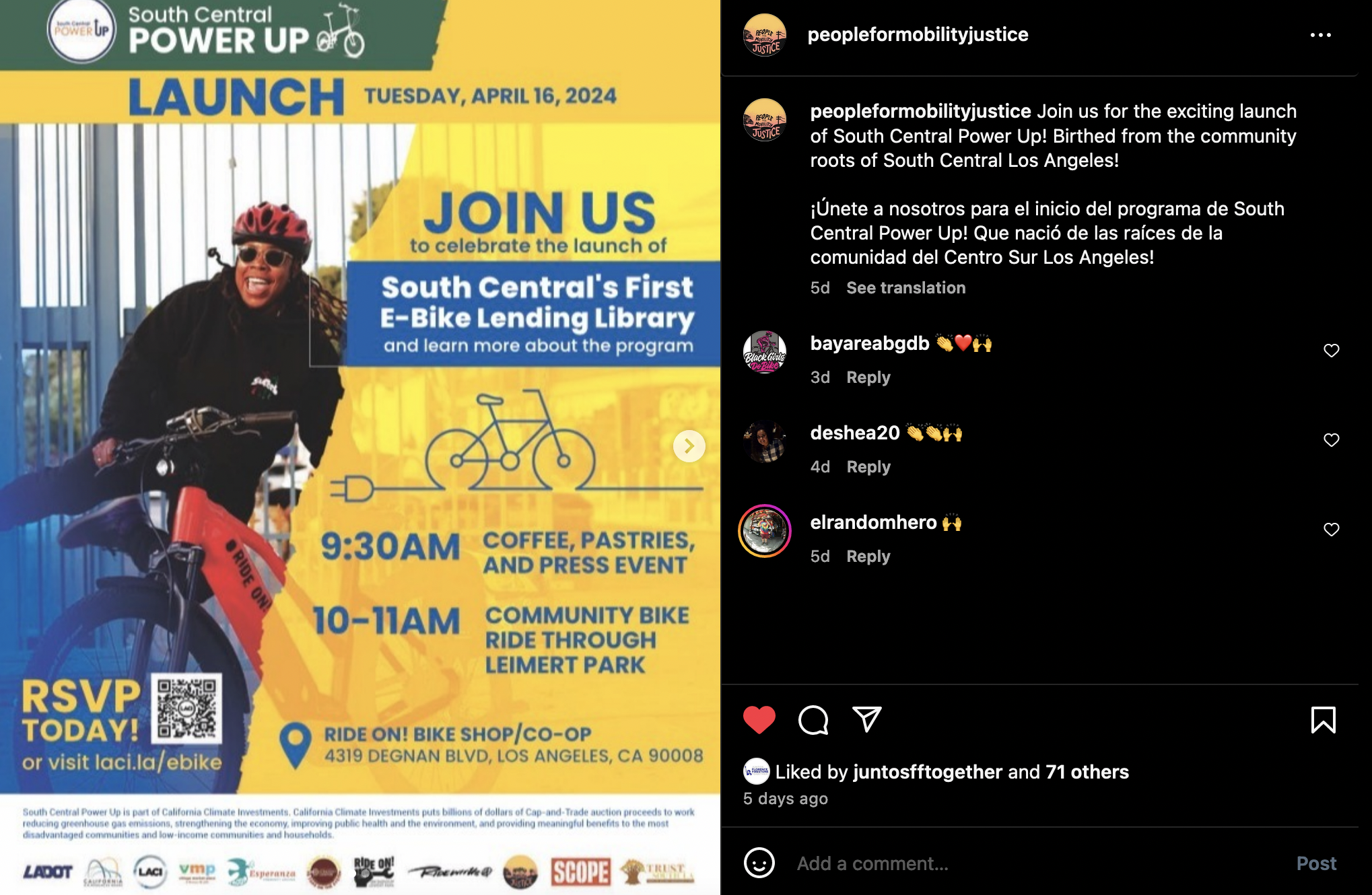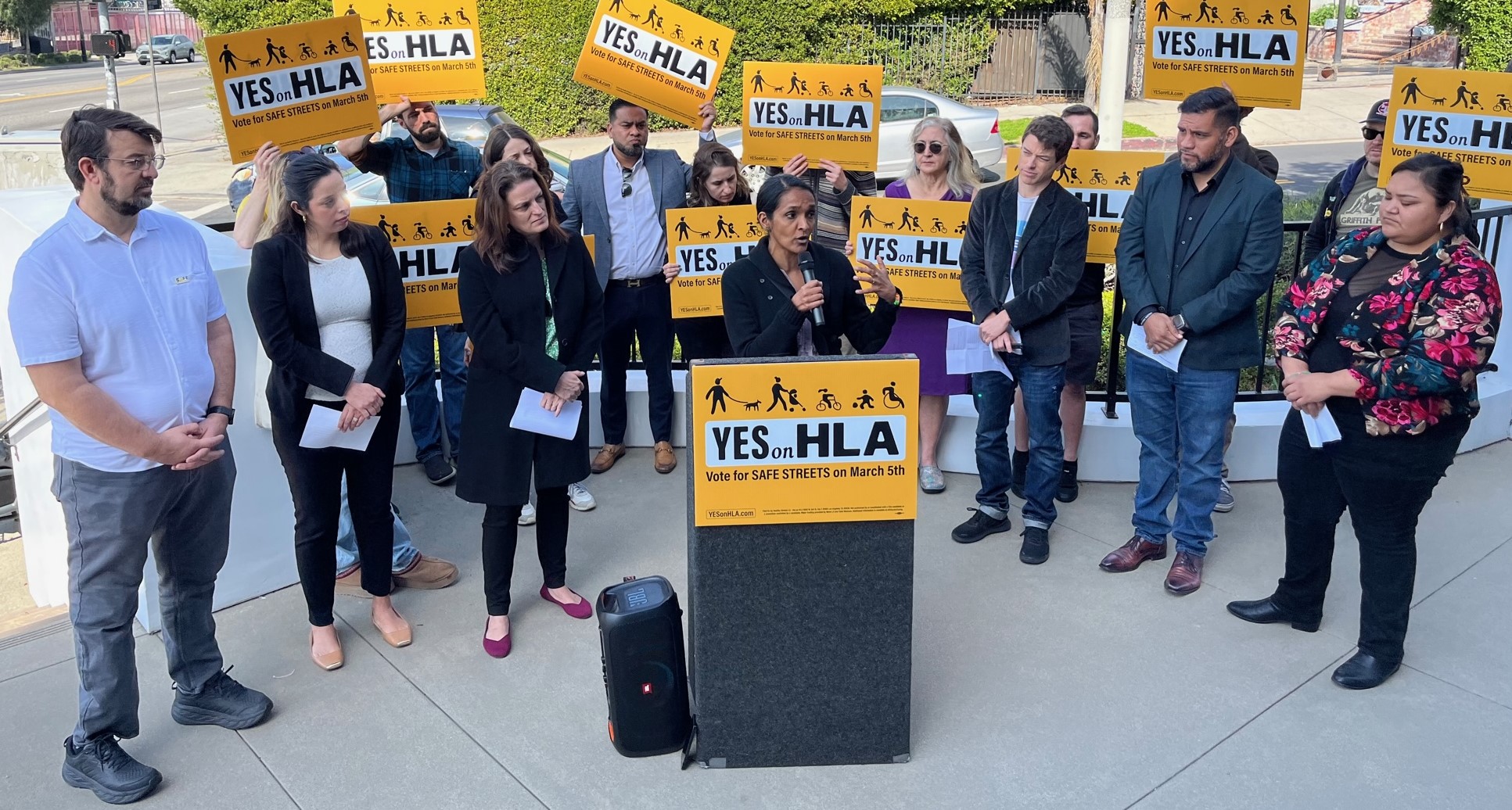Young Planners: How Millennials Can Help Los Angeles in the Coming Years
11:44 PM PST on December 6, 2016

CicLAvia is one way that millennial planners understand cities on a personal level.
This month several articles were posted summarizing a recent report on Census Data. While more millennials are moving to places like Charlotte, Houston and Austin, Los Angeles saw a 7.4 percent decrease in millennial residents between 2005 and 2015. This comes as no surprise to many, with rent skyrocketing, the high cost of living, and ever-increasing job competition. Urban planners have a right to be worried about this phenomenon. With Los Angeles currently in the midst of transformation with the passage of Measure M and many future construction projects, the skills that young planners can provide is needed more than ever for the city.
Forces that Shape Our Worldview
The transaction of data and information gathering is quick and convenient. The world of online platforms such as social media, blogging, or instant messaging offer Millennials a tool to constantly stay connected, communicate faster and simplify the search to find opportunities for civic engagement. From this, Millennials are the most socially connected generation today and the opportunities presented via technology forces Millennials to prioritize their schedule differently than previous generations. Many no longer prioritize having a family at an early age, and instead they focus on continuing education in specialized skill sets.
While they have accrued more debt than Generation X, they have proved to be better at managing finances. Millennials are increasingly foregoing purchasing real estate and automobiles, which is having an effect on urban land use.
How We Can Help
Millennial planners, part of the new “creative class,” see opportunity in new technology to revolutionize Los Angeles’ urban landscape - both online and offline.
For example, Instagram attracts people to explore amateur photoshoot locations, such as the pink Paul Smith Wall on Melrose. Snapchat geofilters allow newcomers to know what neighborhood they are in, such as the newly-formed Sawtelle Japantown. In addition, what conventional planners have argued would decrease community engagement, we again see opportunity. Pokemon Go merged virtual and physical space, encouraging kids and adults alike to explore the Southland and attend massive gatherings in local parks. Waze connects drivers isolated in their own cars with others sharing the same road through a chat system to warn of hazards.
One of the greatest opportunities is in the new sharing economy, which reflects the growing needs of Millennial planners and future generations.
Lyft and Uber can transform parking requirements in the urban core, while also saving the need to purchase a car. Young planners are already using new technologies to make Los Angeles a city that accommodates changing needs, and involving them in the planning process can foster better collaboration.
Millennial planners are still full of energy; not bound to the jadedness of the profession or the political ties that have formed over the years. Accepting the chaos, young planners are willing to engage the wickedness that comes with connecting to the public. Young planners would push for a greater understanding of cities on a personal level. One way of doing so is through the participation of public events, such as art walks, CicLAvia, and the Koreatown Night Market. Young planners are willing to immerse themselves in communities outside of their normal nine-to-five schedule, and are able to do so with less familial obligations.
Young planners, like millennials in other sectors, are increasingly showing a disinterest in mundane work, and have greater interest in finding new approaches to planning. For example, young planners would push for the modernization of city council meetings, to be comprehensive in getting underrepresented stakeholders via online town halls.
Millennials, who grew up under an Obama presidency are more educated and open, and they do not tolerate hate. These characteristics are needed more than ever when the results from the recent elections have shown how different Los Angeles is from the rest of the United States. Los Angeles is an arrival city, accepting diverse immigrants with open arms. Angelenos have come out to vote in favor of cannabis legalization, alternative transportation improvements, and the housing of the homeless. We have chosen to protect our Muslim, Hispanic, Asian, Black, and LGBTQ communities.
Young planners know that utopian dreamers like President-elect Trump are not what this city needs. We accept the “wickedness” in the world, and strive to work around that. We acknowledge the older planners’ struggle to change the world because of hidden externalities. But we still want to help, because with our creativity, energy, and acceptance of others, we can socialize existing space through social media, technology, and activism to transform Los Angeles into a city that is resilient against the growing challenges ahead and inclusive for current and future generations. With that said, we see the importance of creating conditions that attract and retain Los Angeles Millennials.
Jin Eo is a Cal Poly Pomona MURP student hoping to get into transportation planning. She has spent time as a Transportation Planning Intern with the Orange County Transit Authority and also worked for the city of Norwalk.
Jaclyn Garcia is a graduate student at Cal Poly Pomona in Urban and Regional Planning focused in Transportation. She currently works for the city of Los Angeles and is interested in active transportation projects for local governments.
Alex Okashita is a Cal Poly Pomona MURP student and aspiring Transportation Planner. He has worked on alternative transportation for older adults with the city of San Mateo, and also consulted community based organizations under the UCLA Luskin School of Public Affairs to help Sawtelle Japantown residents better engage in neighborhood planning.
Bryan Shiang was born and raised in Los Angeles and has received his B.A. in Urban Regional Planning at the University of California, San Diego. He has consulted with the city of Los Angeles, Watershed Protection Division and upon graduate school at Cal Poly Pomona, he aspires to work as an Environmental Planner in Los Angeles.
Stay in touch
Sign up for our free newsletter
More from Streetsblog Los Angeles
Metro Looks to Approve Torrance C Line Extension Alignment
Selecting the relatively low-cost hybrid alternative should help the oft-delayed South Bay C Line extension move a step closer to reality
This Week In Livable Streets
CicLAvia returns to Venice Boulevard, Metro board committees, L.A. City Council Transportation Committee, Metro budget theater, and more




